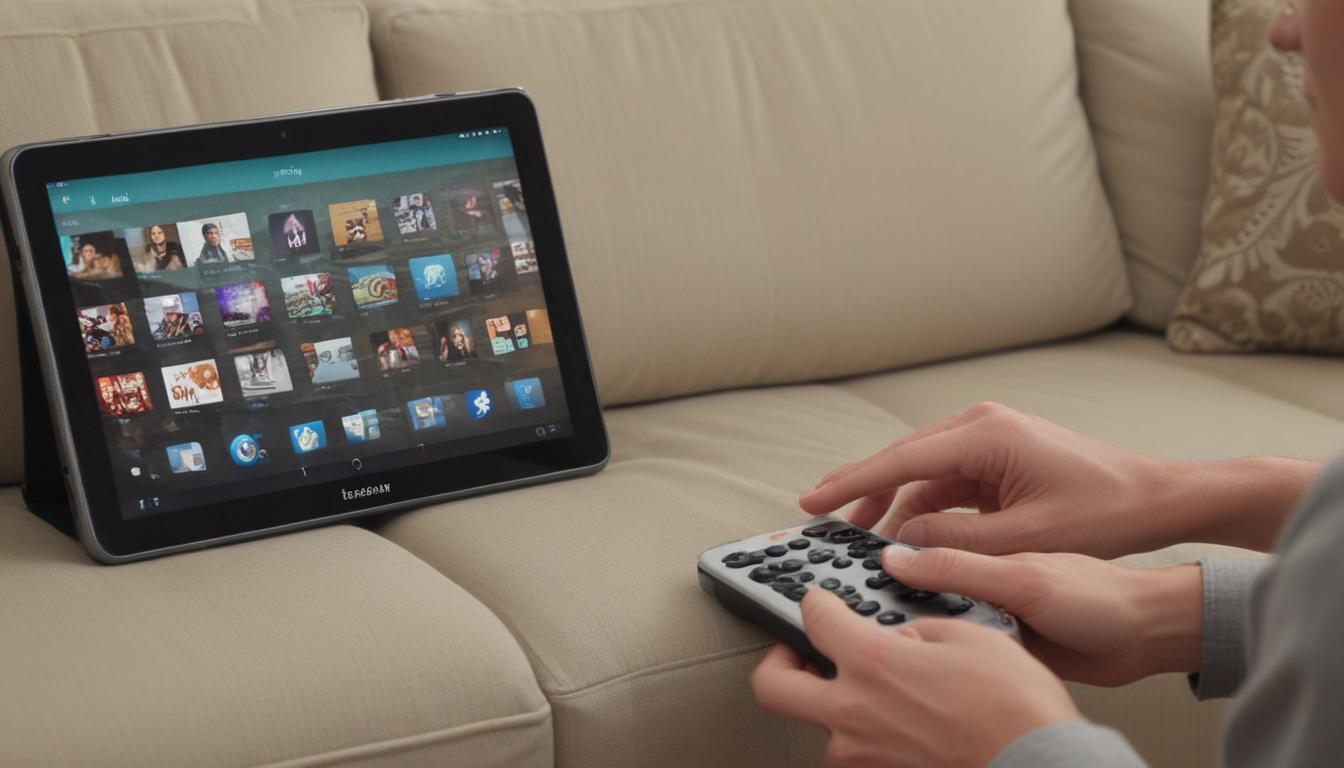Now Reading: Master Your Devices with Motion Control
- 01
Master Your Devices with Motion Control
Master Your Devices with Motion Control

Wave Goodbye to Buttons The Magic of Gesture Recognition Technology
Tired of fumbling for the TV remote that’s wedged between the sofa cushions? Frustrated with smudging your pristine tablet screen with greasy fingers while you’re trying to follow a recipe? We’ve all been there. Our modern lives are filled with incredible devices, but controlling them often feels clumsy and outdated. We are still reliant on physical buttons, clicks, and taps, which can be inconvenient, unhygienic, or simply inefficient. What if you could control your digital world as naturally as you interact with the physical one, using just the motion of your hand?
This isn’t science fiction anymore. The solution is already here and is quietly integrating itself into our daily lives. Gesture recognition technology is transforming the way we interact with our devices, offering a seamless, intuitive, and touch-free method of control. By understanding our movements, this technology is breaking down the barriers between human and machine, paving the way for a future where a simple wave, point, or swipe in the air is all it takes to command the technology around you.
What Is Gesture Recognition Technology
At its core, gesture recognition is a fascinating field of computer science that enables devices to understand and interpret human movements. Think of it as teaching a computer to read body language. Instead of you needing to learn the machine’s language of clicks and taps, the machine learns to understand yours. This technology acts as a bridge, translating your physical actions into digital commands. The ultimate goal is to create a human-computer interface that feels completely natural and effortless, mimicking how we communicate with each other through non-verbal cues.
To achieve this, a system typically relies on a combination of hardware and sophisticated software. The hardware part consists of sensors, which act as the system’s “eyes.” These can range from a simple 2D webcam in a laptop to more advanced 3D depth-sensing cameras, like those used in gaming consoles. The software component is where the real intelligence lies. It uses complex algorithms and machine learning models to analyze the video feed from the sensors, identify the human form, track key points like hands and fingers, and then recognize specific, pre-defined motions as commands. When you swipe your hand, the software sees the pattern, matches it to the “next track” command, and tells your music player to change the song.
How Gesture Recognition is Changing Our Daily Lives
You have likely already encountered gesture recognition, perhaps without even realizing it. From entertainment to our cars, this technology is already making a significant impact.

Revolutionizing Gaming
The world of gaming was one of the first major industries to bring this technology into the living room. Consoles like the Nintendo Wii with its motion-sensing remote and the Xbox Kinect with its full-body tracking camera revolutionized gameplay. They moved beyond simple button-mashing and allowed players to swing a virtual tennis racket or drive a race car by using their own bodies as the controller, creating a far more immersive and physically engaging experience.
Smarter and Safer Driving
In the automotive industry, luxury brands allow drivers to perform simple gestures to control the infotainment system, such as rotating a finger in the air to adjust the audio volume or swiping a hand to answer a phone call. This allows the driver to keep their eyes on the road instead of searching for a small button, increasing safety and convenience.
Innovations in Healthcare
This technology is invaluable in sterile environments like hospital operating rooms. Surgeons can manipulate medical images like X-rays or MRIs on a screen with simple hand movements, all without having to touch a non-sterile surface, keyboard, or mouse. This helps maintain a clean environment and improves workflow during critical procedures.
The Future of Interaction Where Gesture Tech is Headed
The journey of gesture recognition is just beginning, and its future is deeply intertwined with the rise of other immersive technologies like Augmented Reality (AR) and Virtual Reality (VR). Imagine putting on a pair of lightweight AR glasses and manipulating floating holographic displays with your bare hands, just like in the movie Minority Report. You could resize a virtual blueprint or collaborate on a 3D model with a colleague across the world. This hands-free, intuitive interaction is the holy grail for AR and VR, and gesture control is the key to unlocking that potential.
As the technology matures, it will become more powerful and subtle. Future systems won’t just recognize big, deliberate waves; they will be able to interpret micro-gestures, like the subtle tap of a finger or the slightest turn of a wrist, allowing for a much richer and more nuanced range of commands. Of course, challenges remain. Ensuring near-perfect accuracy to prevent frustrating misinterpretations and addressing critical user privacy concerns about cameras in our personal spaces are paramount. However, as these hurdles are overcome, prepare for a world where your movements become the ultimate remote control for a seamlessly connected digital environment.


































